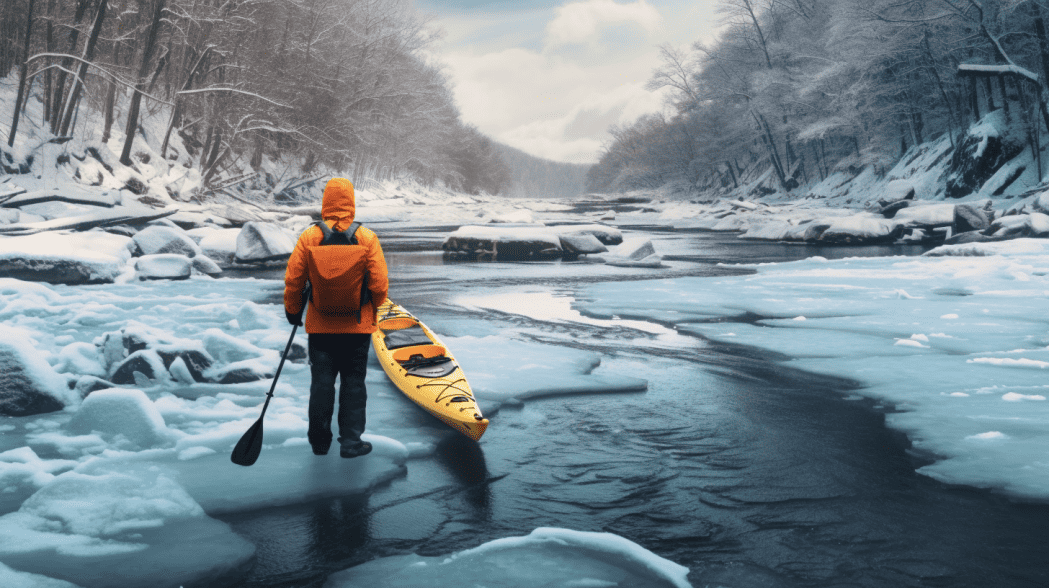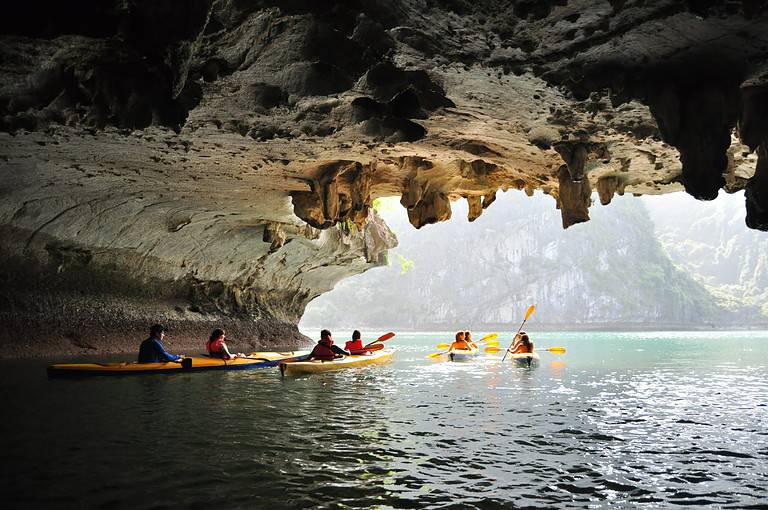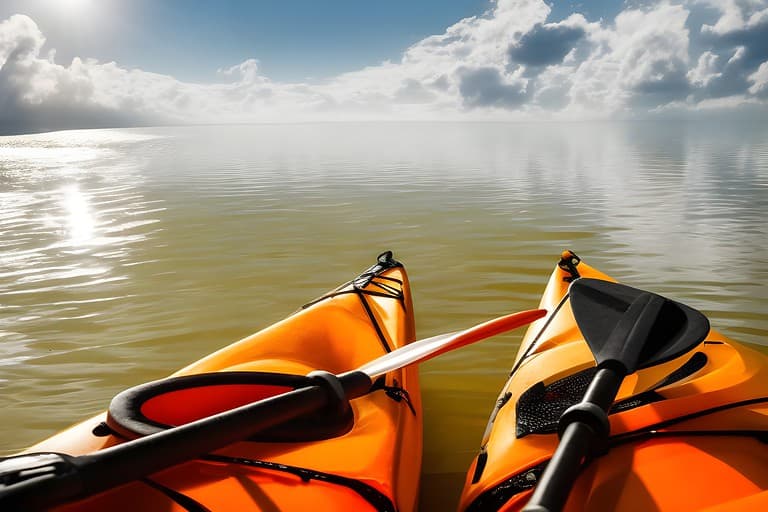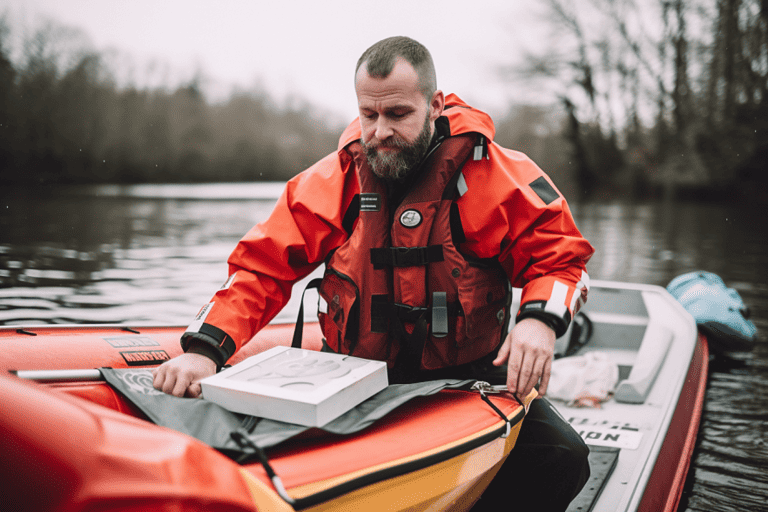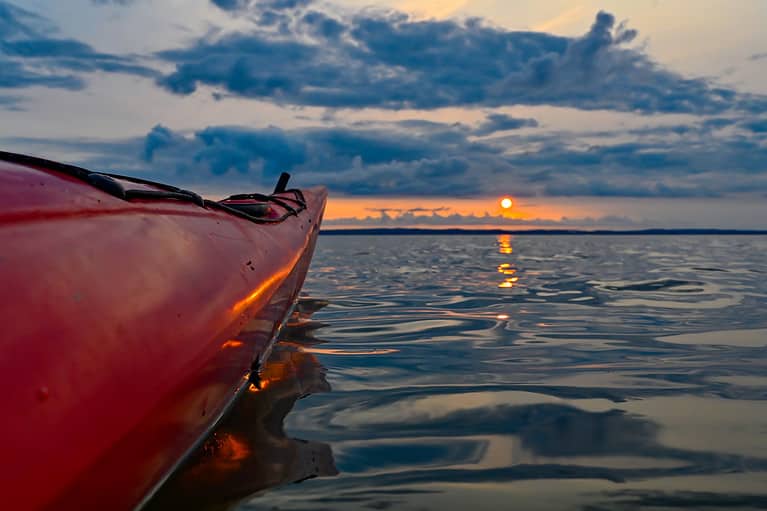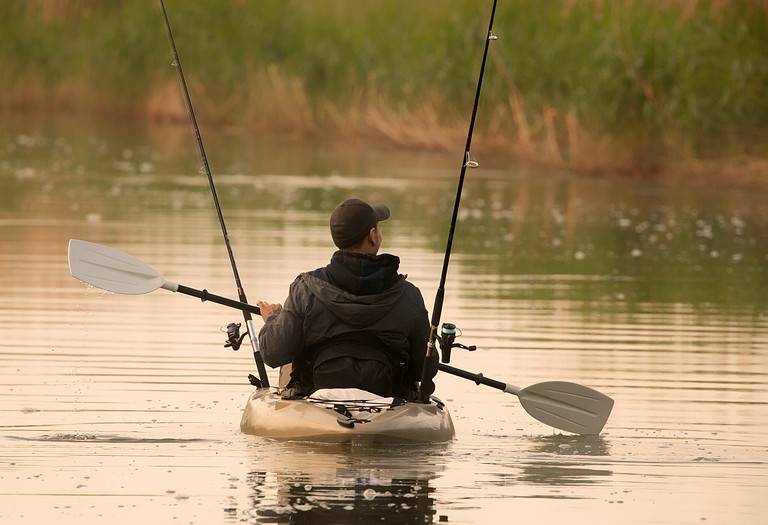Cold Weather Paddling: A Comprehensive Guide to Navigating The Chill
Kayaking is not just a summer pastime. With the proper preparation and gear, you can experience the thrill of paddling even in cold weather. This article provides valuable insights and safety tips for keeping you informed and safe about cold weather paddling. From knowing how to dress appropriately to understanding the dangers of cold water temperatures, we’ve got it all covered.
Whether you’re a seasoned kayaker or a paddling enthusiast seeking a new challenge, this guide offers important knowledge and safety tips for your cold-weather paddling adventure.
The Attraction of Cold Weather Paddling
Cold weather paddling can be an exhilarating experience that introduces a new perspective on familiar landscapes and is truly rewarding for those brave enough to step outside their comfort zones.
When it comes to the surroundings, the contrast is remarkable. The pristine whiteness of fresh snow is a stark contrast to the glistening, icy blue water. The cold air often brings a hush, a silence that only winter can produce, enveloping the waterways in otherworldly tranquility. This isolation brings a new level of peacefulness not typically present during the warmer, busier months. Wildlife sightings can be more dramatic and visible against the winter white, and the sounds of animals scurrying on the ice or snow can be amplified.
Moreover, paddling in cold weather has a unique, crisp sensation. Each paddle stroke cuts through the chilled water and sends a spray of icy droplets into the air, their mist freezing instantly in the cold air. The sound of the water dripping from the paddle has a certain rhythm that’s as soothing as it is mesmerizing. There’s an indescribable freshness in the air that fills your lungs with every breath, invigorating and cleansing simultaneously.
The challenge of cold weather paddling also brings a sense of accomplishment. Navigating through ice chunks or negotiating partially frozen surfaces can test one’s skills and resilience, making the experience more rewarding. This is not to mention the physical benefits, as the body needs to work harder to stay warm, burn more calories, and improve overall fitness.
Safety is an essential aspect of cold-weather paddling. Preparing and dressing appropriately with insulating, waterproof gear and following safety precautions is paramount. Correct equipment, such as dry suits and gloves, can distinguish between a comfortable journey and a freezing ordeal. It’s also vital to stay well-nourished and hydrated.
Another noteworthy benefit of cold weather paddling is the opportunity for unique photography. The light during winter is different from any other season, and the resulting photos can be striking. Reflections on the water, frosted trees, icicles hanging from branches, or the breathtaking colors of a winter sunset can all offer stunning imagery.
Understanding the Dangers of Cold Water
Cold water immersion presents three major risks to paddlers: cold shock response, cold incapacitation, and hypothermia. Understanding these risks is key to preparing for and mitigating the dangers of paddling in cold water.
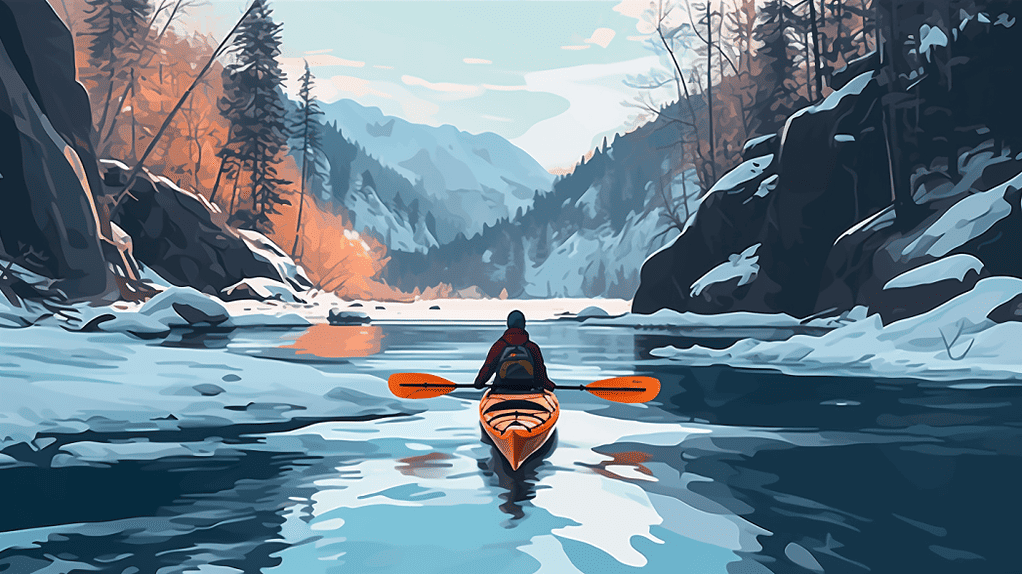
1. Cold Shock Response: This automatic and instantaneous response occurs within the first few minutes of sudden exposure to cold water. The shock can cause gasping and hyperventilation, and these involuntary responses can increase the risk of water inhalation, leading to drowning. Cold shock can sometimes trigger heart attacks due to the sudden heart rate and blood pressure increase.
2. Cold Incapacitation: Within 5 to 15 minutes of exposure, cold water affects the body’s muscular and nervous systems, leading to a loss of strength and coordination. This effect can make swimming or performing self-rescue techniques difficult, such as getting back into a capsized kayak or canoe.
3. Hypothermia: Hypothermia—a dangerously low body temperature—can set in if exposure continues. Hypothermia leads to confusion, lethargy, and loss of consciousness. While many people think hypothermia occurs quickly, it usually takes at least 30 minutes of exposure to cold water to start to set in. However, this can occur faster in very cold water or if the person is not dressed properly.
In addition to these immediate risks, extended exposure to cold can also lead to longer-term health problems, including frostbite and damage to the nervous system.
Understanding these dangers underlines the importance of being well-prepared and equipped for cold weather paddling. This preparation includes wearing appropriate clothing such as dry suits or wetsuits, thermal layers, neoprene gloves, and boots and ensuring that life vests are always worn. It’s also critical to have a rehearsed plan for self-rescue or assisted rescue and to carry signaling devices to alert others if you’re in trouble.
It’s crucial to remember to paddle with others when possible, to remain close to shore, and to be aware of weather changes. Lastly, avoid alcohol, as it accelerates heat loss and impairs judgment, increasing the risk of accidents.
By understanding these dangers and taking the necessary precautions, paddlers can enjoy their activity safely, even in the cold.
What is the Safe Water Temperature for Winter Kayaking?
When is it too cold to kayak? While 60 degrees Fahrenheit (about 15 degrees Celsius) is often cited as a safe threshold for water temperatures, it’s important to note that hypothermia can set in with prolonged exposure, even in water above this temperature. So, while paddling in colder waters is not inherently unsafe, having the right preparation and gear to protect yourself is critical.
1. Preparation: Checking the weather forecast before your trip is always good. It’s also essential to research your route in advance, be aware of the potential hazards, and have a solid plan in place. Understand the signs and symptoms of hypothermia and cold shock so that you can react promptly if they occur. Ensure you have a solid self-rescue or assisted rescue plan, and consider taking a cold-water rescue training course.
2. Gear: Wearing the right gear is critical when paddling in cold water. This should include a drysuit or wetsuit, thermal layers, waterproof gloves, and insulated boots. A lifejacket is a must, not just for buoyancy, but can also provide additional insulation.
3. Safety Equipment: Carry essential safety gear such as a bilge pump to remove water from your kayak, a paddle float for reentry assistance, a whistle or other sound-producing device for signaling for help, and a throw bag with a rescue line. A personal locator beacon or a marine VHF radio can also be helpful in emergencies.
It’s important to remember that the air temperature can be misleading regarding winter kayaking. Even if the air is above freezing, the water may still be dangerously cold. Also, even if the air and water temperatures add up to more than 120 degrees Fahrenheit (a rule of thumb some paddlers use), the risk of hypothermia is still present, especially if you’re wet or in windy conditions.
Paddling with a buddy or a group is highly recommended during winter, as this can provide additional safety in case of any incidents. Also, always let someone onshore know your plan and expected return time.
How to Dress for the Water Temperature
When dressing for cold water paddling, there are several factors to consider. It’s important to use layers and choose the right materials for each layer. Here is a general guideline:
1. Base Layer: The base layer is the layer closest to your skin and primarily manages moisture and sweat. This layer should be made of moisture-wicking materials such as synthetic fabrics or merino wool that can help keep you dry by moving sweat away from your skin. Avoid cotton, as it holds moisture and can make you colder when wet.
2. Insulating Layer: This layer is designed to keep you warm by trapping heat. Again, synthetic fabrics or wool are good choices for this layer, as they provide excellent insulation and retain their insulating properties even when wet. You can add or subtract layers depending on the water and air temperature.
3. Outer Layer: This layer should protect the water and the wind. For cold water paddling, a drysuit is often the best choice. Drysuits are designed to keep you completely dry, and they work best when paired with the right insulating layers underneath. They feature gaskets at the neck, wrists, and ankles to prevent water from entering the suit. Another option could be a wetsuit designed to let a small amount of water in. This water then warms up and serves as an additional insulating layer.
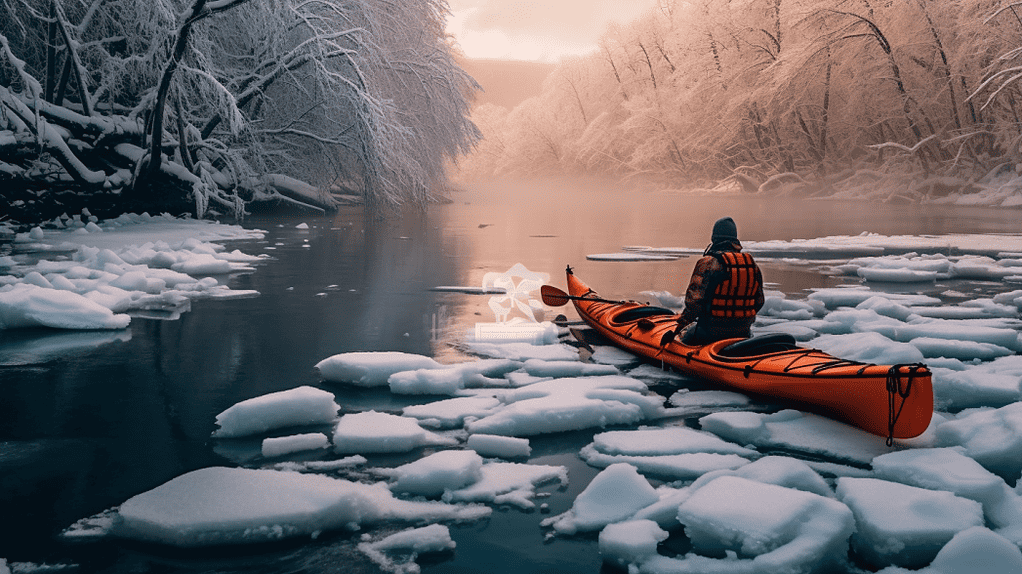
Neoprene gloves and booties are excellent choices for protecting your hands and feet. Consider wearing a neoprene hood or cap for your head, as a significant amount of body heat can be lost through the head.
In addition, wearing a Personal Flotation Device (PFD), also known as a life jacket, is essential. This is not only a crucial safety device, it also adds an extra layer of insulation. Choose a PFD with a good fit that won’t interfere with your paddling movement.
Remember, the right clothing can distinguish between a pleasant and safe winter paddling experience and a dangerous and uncomfortable one. Always be prepared and put safety first. By dressing properly, you can ensure that you stay safe and comfortable, allowing you to enjoy the unique beauty of winter paddling.
The Importance of Wetsuit Padding and Drysuit Paddling
Both wetsuits and drysuits play a crucial role in cold-water paddling and have distinct characteristics that make them suitable for specific circumstances. Choosing between a wetsuit and a drysuit often depends on the water temperature, the weather conditions, and personal preference.
Kayak Wetsuits
Wetsuits are primarily made from neoprene, a synthetic rubber that provides excellent insulation due to its closed-cell structure, which traps tiny air bubbles. As you’ve pointed out, wetsuits allow a thin layer of water to get in. This water is then heated by the body, creating a warm layer around you. Wetsuits are designed to fit snugly against the body, minimizing the amount of water that enters and can be circulated. This makes them excellent for situations where you’ll be immersed in the water, such as surfing or whitewater kayaking.
The thickness of the wetsuit plays a major role in its insulating properties. Wetsuits come in various thicknesses, with thicker suits providing more warmth. However, the thicker the suit, the more restrictive it may feel. Wetsuits are typically categorized by two numbers (e.g., 4/3mm), the first representing the thickness in the torso area and the second the thickness in the extremities.
Kayak Drysuit
Drysuits are designed to keep you dry, regardless of the water temperature. Made of waterproof materials like Gore-Tex, nylon, or PVC, they feature tight seals around the neck, wrists, and ankles to prevent water from entering the suit. Dry suit kayaking is designed to be worn with insulating layers underneath, which can be adjusted according to the temperature. They are usually bulkier and offer more freedom of movement than wetsuits, making them suitable for sea kayaking or canoeing activities.
While drysuits provide superior protection against cold water and air temperatures, they are also generally more expensive and require more maintenance than wetsuits. The seals and zippers need to be regularly inspected and repaired if necessary, to ensure the suit remains watertight.
Essential Cold Weather Paddling Gear
Cold weather paddling requires a specific gear set to ensure safety and comfort. Here’s a more detailed breakdown of essential equipment:
1. Paddling Jackets or Tops: These protect you from wind, rain, and spray. They are typically made from waterproof yet breathable materials, often with neoprene or adjustable seals at the wrists and waist to prevent water entry. Some also have a spray skirt tunnel for integration with a spray skirt, which is particularly useful for kayaking.
2. Neoprene Booties or Waterproof Shoes: Footwear for cold weather paddling must be warm, comfortable, and properly grip wet surfaces. Neoprene booties are a popular choice, offering good insulation and water resistance. For those who prefer something more shoe-like, waterproof paddling shoes are available.
3. Gloves or Pogies: Cold hands can seriously impair your paddling ability, so good hand protection is essential. Neoprene gloves or mitts provide good insulation. Another option is ‘pogies’ – paddle mittens that attach directly to your paddle and allow direct hand-to-paddle contact, which some paddlers prefer.
4. Dry Bags: Dry bags are a must-have for storing your gear. They are designed to keep the contents dry even if the bag is submerged. They come in different sizes, and it’s often a good idea to have several small ones rather than one large one, so you can organize your gear effectively.
5. Insulated Paddle: As you’ve pointed out, a good paddle is essential. Consider one with a carbon fiber shaft as these are often warmer to the touch than aluminum ones. You could use foam paddle grips or a similar insulating wrap on a standard paddle for a more budget-friendly option.
6. Personal Flotation Device (PFD): Always wear a life jacket when on the water, no matter the weather. In addition to its safety benefits, a PFD provides extra insulation. Some PFDs also have pockets, which can be handy for storing small items like a whistle or energy bars.
7. Headgear: A substantial amount of body heat is lost through the head, so appropriate headgear is vital. Depending on the conditions, this can range from a wool hat to a neoprene skull cap or a full hood.
8. Communication Devices: These are important for safety. This could include a whistle, a VHF radio for coastal paddling, a mobile phone in a waterproof case, or even a personal locator beacon (PLB) if you’re paddling in more remote locations.
Keeping Your Hands and Feet Warm in Cold Water
Maintaining warmth in your hands and feet while paddling in cold weather can significantly impact your performance and overall comfort. Here are some tips and tricks to help you keep your hands and feet warm:
Hands:
- Neoprene Gloves or Mitts: As you’ve mentioned, neoprene gloves or mitts are an excellent choice for keeping your hands warm. They are designed to trap a thin layer of water between the glove and your skin, which is then heated by your body, creating an insulating layer. These gloves are available in different thicknesses, with thicker gloves providing more warmth. However, thicker gloves may also restrict movement, so you must find a balance that works for you.
- Pogies: These are another great option for hand protection. Pogies are mittens that attach directly to the paddle, providing a barrier from the cold and wind while allowing direct contact with the paddle.
- Hand Warmers: Small hand warmers can be tucked into your gloves for extra warmth. These are typically air-activated heat packs that provide warmth for several hours.
Feet:
- Neoprene Booties: Like gloves, neoprene booties are designed to keep your feet warm even when wet. They also protect against sharp objects and rough surfaces when entering or exiting the water.
- Waterproof Socks: Consider wearing waterproof socks under your booties for extra protection. These are typically made from breathable materials like Gore-Tex to keep your feet dry and comfortable.
- Insulated Footwear: Some paddling shoes and boots have built-in insulation for added warmth. These can be a good option for icy conditions.
- Layering: Just like with the rest of your body, layering can help keep your feet warm. Start with a moisture-wicking sock, add a warm insulating layer, and then put on your waterproof layer.
Staying Safe: Essential Tips for Cold Weather Paddling
Safety is paramount when engaging in any outdoor activity, especially cold-weather paddling. To ensure you stay safe, here are some essential tips:
1. Check Weather and Water Conditions: Always check the weather forecast and water conditions before you set out. Look for information on wind speed and direction, water temperature, tide times (for sea kayaking), and any weather warnings. This will help you plan your route and be prepared for the conditions you might face.
2. Inform Someone About Your Plan: Always let someone know where you’re going, what route you’ll be taking, and when you expect to return. This person can raise the alarm if you don’t check in when expected.
3. Dress Appropriately: Dress for the water temperature, not the air temperature. Always wear a wetsuit or drysuit and layer your clothing to stay warm. Don’t forget your gloves, hat, and waterproof shoes.
4. Use the Buddy System: If possible, never paddle alone. Having a buddy with you means you can look out for each other. If paddling alone is necessary, consider carrying a personal locator beacon (PLB) or other emergency communication device.
5. Carry Essential Safety Gear: Your safety gear should include a Personal Flotation Device (PFD), whistle, headlamp, throw bag with rescue rope, towline, bilge pump or sponge, first aid kit, flares, and a knife. Make sure you know how to use each piece of safety equipment.
6. Carry Navigation Tools: A map, compass, or GPS can help you navigate, especially in poor visibility conditions. Make sure you know how to use them.
7. Hydrate and Fuel Your Body: Cold weather can dehydrate you as quickly as hot weather. Carry enough water and high-energy snacks to stay well-hydrated and fueled.
8. Know Your Limits: Don’t push yourself beyond your capabilities, especially in cold conditions. Hypothermia can impair your judgment and motor skills, making it harder to get out of a tricky situation. If you’re tired, cold, or worsening conditions, it’s time to head for shore.
Emergency Measures: Dealing with Hypothermia and Cold Shock
Knowing how to handle emergencies such as hypothermia and cold shock is crucial when paddling in cold weather. Here’s what you need to know:
Hypothermia
Hypothermia occurs when your body loses heat faster than it can produce it, causing a dangerously low body temperature. Hypothermia is a medical emergency that can become life-threatening if not promptly treated.
Signs of hypothermia include shivering, slurred speech, slow and shallow breathing, weak pulse, clumsiness or lack of coordination, drowsiness or very low energy, confusion or memory loss, and loss of consciousness.
If you suspect someone is suffering from hypothermia:
- Move the person out of the cold: Get them to a warm place if possible.
- Remove wet clothing: If they’re wearing wet clothes, take them off and replace them with dry clothes or blankets.
- Warm up the core first: This can be done using your own body heat or with blankets. Use hot packs or a heating pad on the chest, neck, head, and groin area, but avoid direct skin contact to prevent burns.
- Give warm fluids: If the person is conscious, give them a warm, sweet, non-alcoholic, caffeine-free beverage to help warm the body.
- Call for medical help: If the person’s condition doesn’t improve or worsens, seek immediate medical attention.
Cold Water Shock
Cold water shock can happen within minutes of falling into icy water, causing an involuntary gasp, often followed by rapid breathing and increased heart rate. This can lead to panic, incapacitation, or even cardiac arrest.
If you or someone else falls into cold water:
- Stay calm: Control your breathing and suppress the urge to gasp.
- Float first: Rather than trying to swim immediately, get your breathing under control and then float on your back to maintain energy.
- Call for help: If you have a whistle or other signaling device, use it to attract attention.
- Gradually warm up: Once out of the water, gradually rewarm the body with dry clothes and blankets. Avoid abrupt movements that could trigger a cardiac event.
- Seek medical help: Even if you feel fine, it’s advisable to seek medical attention after a cold shock event.
Keeping a thermos with hot fluids can be a valuable tool for gradually rewarming a person suffering from cold shock or hypothermia. However, it’s important to remember that the person must be conscious and able to swallow correctly to avoid the risk of burns or choking.
Prevention is always the best approach, so ensure you’re well-prepared for cold weather paddling with appropriate gear, know the conditions, and understand the risks.
The Joy of Winter Kayaking: Is Paddling in Cold Worth It?
Indeed, winter kayaking can be a magical experience, offering unique views and serenity not often found during the busy summer months. Paddling through frost-tinged landscapes, with the tranquil hush of winter surrounding you, can be deeply peaceful and rejuvenating. Here are a few reasons why many paddlers find cold-weather kayaking worth it:
1. Peace and Quiet: With fewer people venturing onto the water in the colder months, the waterways become a haven of calm. The quiet and tranquility can provide an excellent opportunity for reflection and can make wildlife spotting easier as animals might come closer to the shorelines in search of food.
2. Unique Scenery: Winter transforms landscapes. Paddling amidst snow-covered trees, along frozen shores, or beneath icicle-draped cliffs is a unique experience you won’t get during the warmer months.
3. Increased Fitness: Paddling in cold weather can be a great way to stay active during winter, burning calories and increasing your endurance. It also offers a balance challenge, as the water conditions are more variable with the winter weather.
4. Wildlife: Winter is a great bird-watching time as many species migrate. You might also glimpse other wildlife that become more visible against the snow.
5. New Challenges: Paddling in the cold presents new challenges and learning experiences. It tests and builds your skills as a paddler, which can be very satisfying.
However, it’s important to remember that winter paddling isn’t for everyone and certainly isn’t something to be taken lightly. The colder conditions can be more dangerous, and the requirement for additional gear and safety precautions might be a barrier for some. Always ensure you’re well-prepared and trained before venturing out, and know your limits.
Frequently Asked Questions (FAQs) about Cold Weather Paddling
Q1: Is it safe to paddle in cold weather?
Answer: Yes, paddling in cold weather can be safe if you are adequately prepared. This includes checking the weather and water conditions, dressing appropriately for the water temperature, and carrying the necessary safety gear. Always inform someone about your paddling plans and estimated return time, especially when alone.
Q2: What should I wear for cold weather paddling?
Answer: Dress for the water temperature, not the air temperature. Layer your clothes for insulation and wear waterproof gear to stay dry. Consider a wetsuit or drysuit, a waterproof paddling jacket, neoprene gloves, and waterproof booties. Remember, staying warm and dry is critical when paddling in cold weather.
Q3: What’s the difference between a wetsuit and a drysuit?
Answer: A wetsuit provides insulation by trapping a thin layer of water between your body and the suit, which your body heat warms up. A dry suit, on the other hand, prevents water from entering the suit, keeping you completely dry. Drysuits offer better insulation and are recommended for colder conditions.
Q4: How can I keep my hands warm while paddling in cold weather?
Answer: Wear gloves or neoprene or other insulating, waterproof mitts. Keeping your hands warm is crucial for maintaining dexterity and control over your paddle.
Q5: What safety gear should I carry while paddling in cold weather?
Answer: Your safety gear should include a life jacket, a whistle, flares, a throw rope, a compass or GPS, and a first aid kit. If possible, carry a communication device in a waterproof bag or case.
Q6: What are the signs of hypothermia?
Answer: Early signs of hypothermia include shivering, cold and pale skin, tiredness, fast breathing, and confusion or memory loss. In severe cases, symptoms can escalate to drowsiness, slow and shallow breathing, loss of consciousness, and a weak and slow pulse.
Q7: Can I go kayaking alone in cold weather?
Answer: While it’s possible to kayak alone in cold weather, it’s generally safer to paddle with a partner, especially in colder conditions. If you do decide to go alone, always let someone know your paddling plan and estimated return time.
Q8: Is there a temperature at which I shouldn’t go paddling?
Answer: Water temperatures below 60 degrees can be hazardous, even for experienced paddlers. If the water temperature drops below this point, it’s important to have the appropriate gear and safety measures in place. Avoid paddling in extreme conditions, and always put safety first.
Summary
Cold weather paddling offers a uniquely tranquil and visually stunning experience, transforming familiar landscapes into winter wonderlands and providing a serenity that’s difficult to match. However, the season’s beauty also comes with added risks, making preparation and understanding of potential dangers paramount for a safe and enjoyable journey.
Dressing appropriately is one of the critical aspects of cold-weather paddling. Remember that one should dress for the water temperature, not the air temperature, as the water will invariably be colder and poses the most immediate risk should you end up immersed. Layers of insulating, waterproof materials such as a wetsuit or drysuit, a paddling jacket, gloves, and booties are crucial in maintaining body heat and staying dry.
Safety must always be prioritized. A well-thought-out float plan shared with someone on shore, carrying emergency gear like flares, a whistle, and a throw rope, and having the knowledge to treat cold-related emergencies like hypothermia and cold shock are critical measures that can drastically improve the outcome of any unexpected situations.
Although these challenges may seem daunting, with the right preparation and respect for the conditions, paddling in cold weather can turn into a rewarding and exhilarating experience. The serenity of winter’s hush, the unique wildlife activities, and the personal satisfaction gained from conquering the elements all contribute to an unforgettable adventure. Cold weather paddling truly is a testament to the saying – there’s no such thing as bad weather, only unsuitable clothing.

